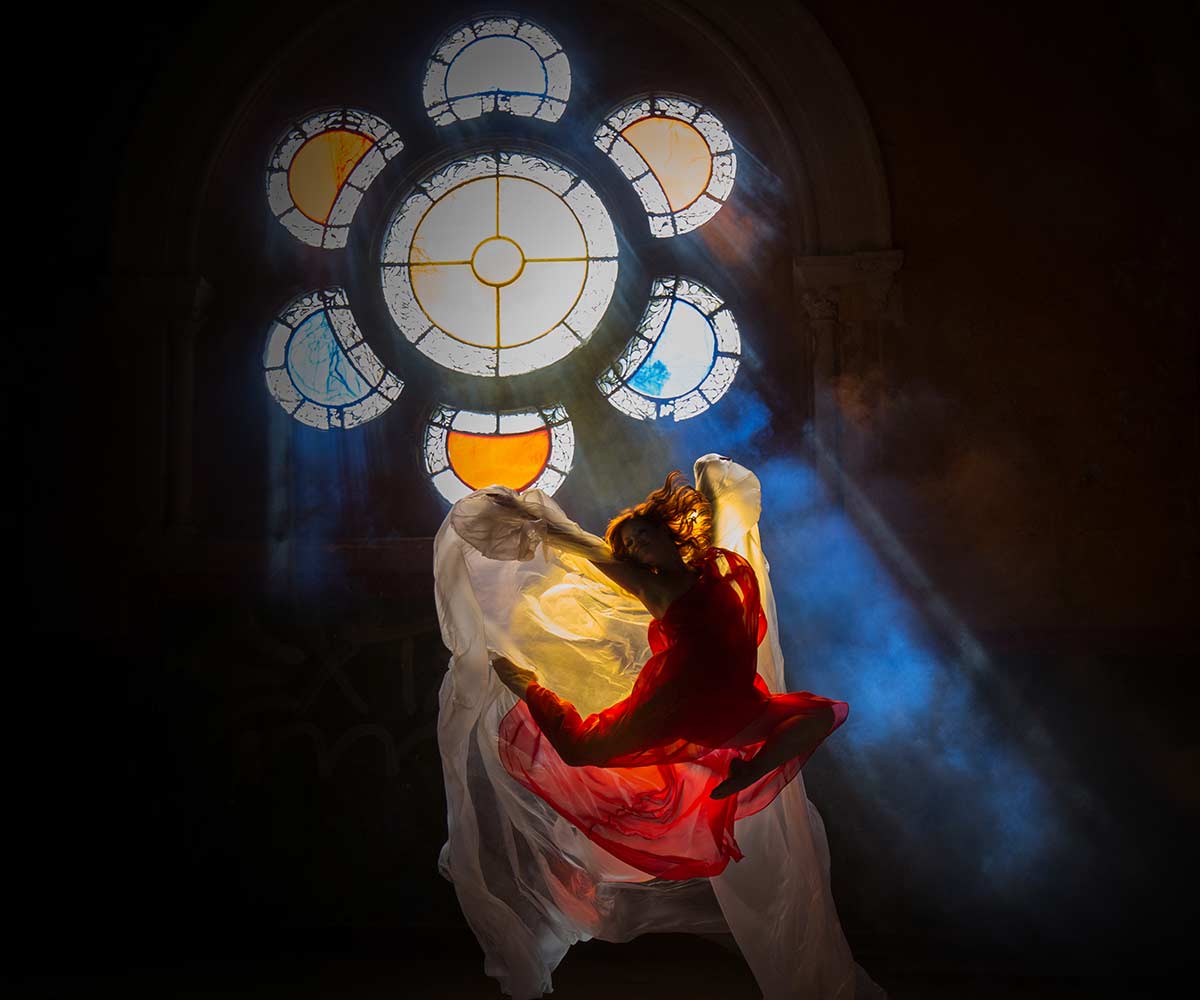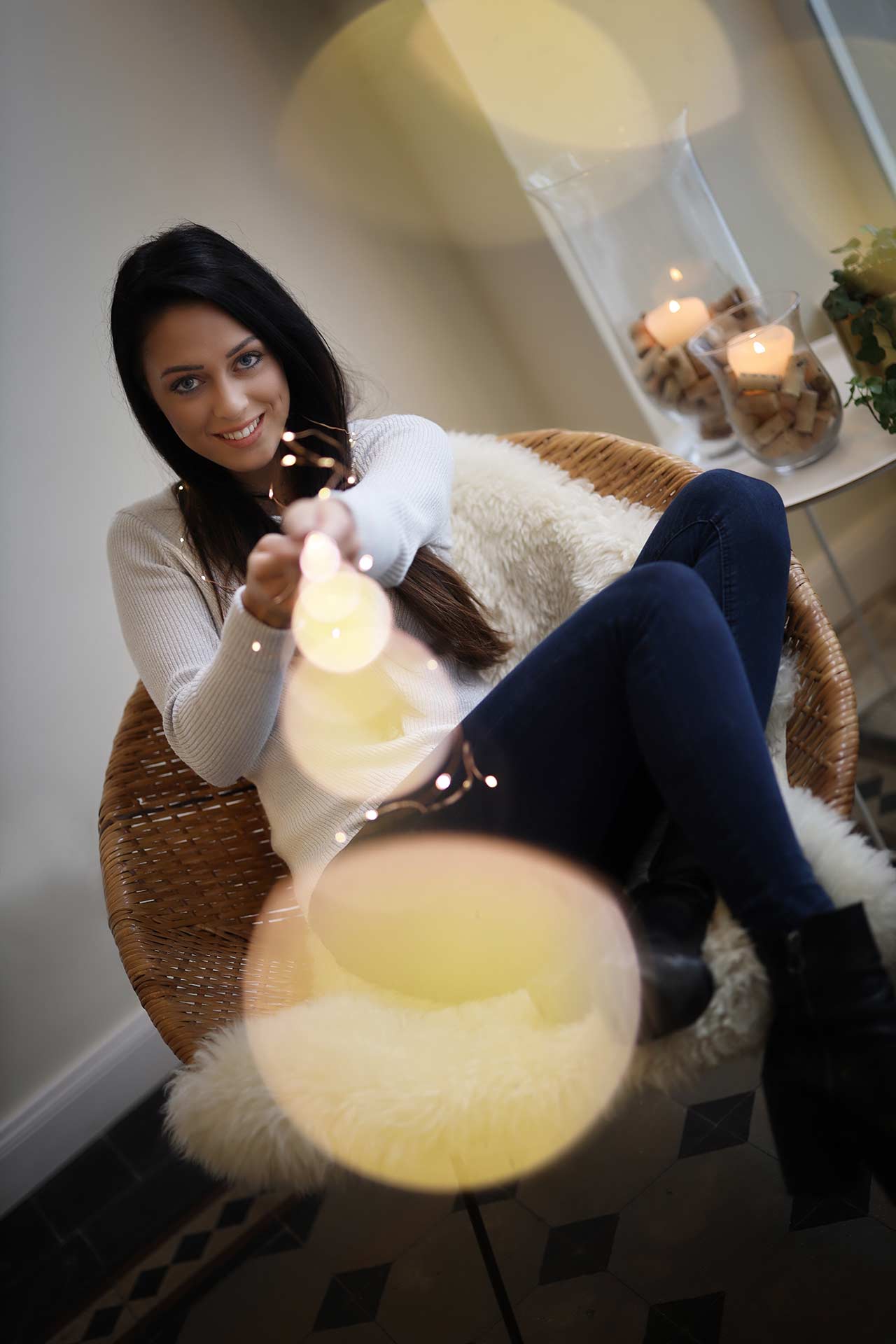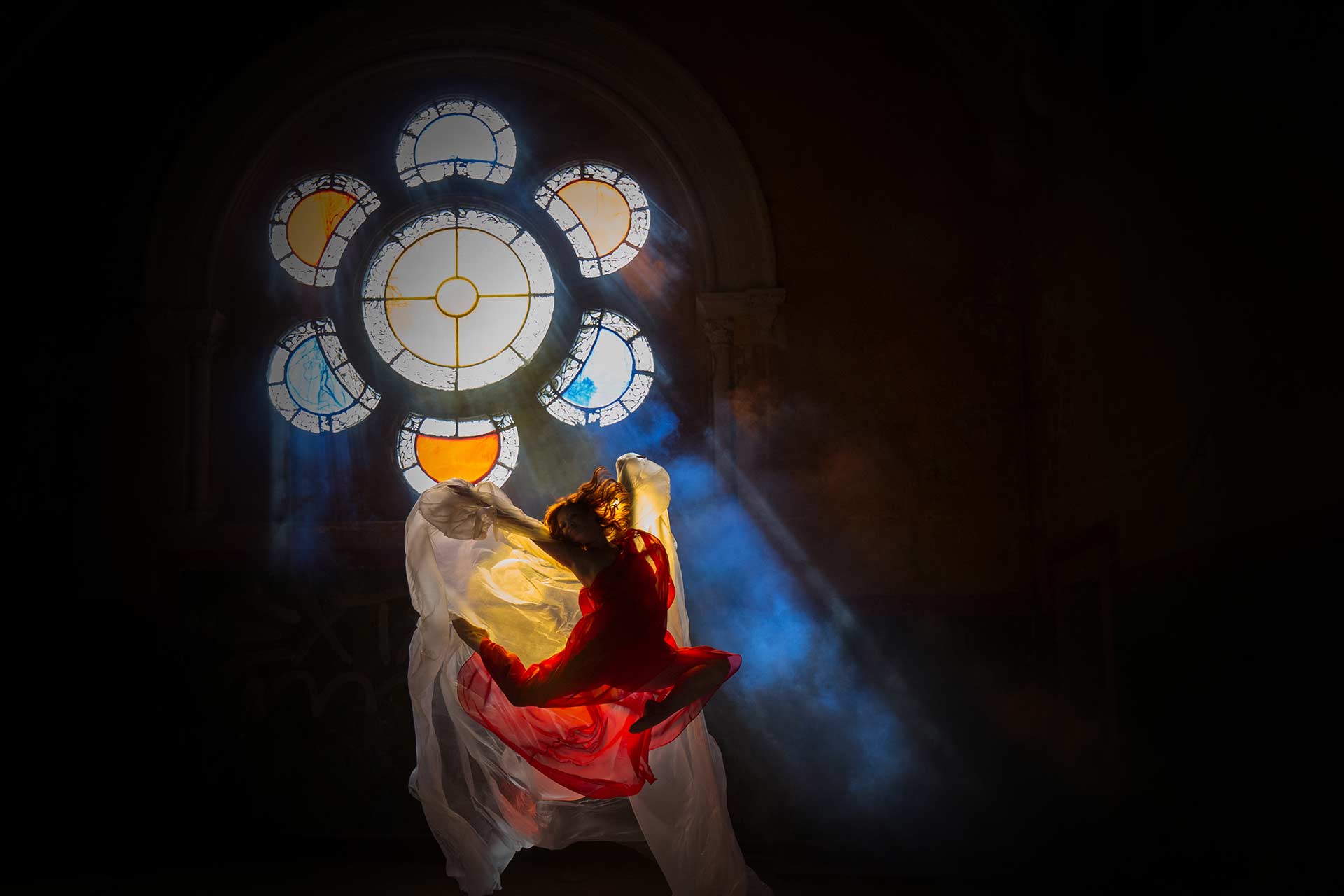How to avoid camera shake in low light
Reading time approx. 4 minutes
Helpful?

How to avoid camera shake in low light
Reading time approx. 4 minutes
Helpful?
Some of the most exciting photo opportunities often arise in low-light situations, when the subject is not perfectly lit.
A romantic candlelight dinner, your partner gently illuminated by candlelight. Highlights from a candle flame or string of lights reflect in their eyes. You want to capture the moment - but in focus and without flash.
Camera settings
With kit lens
TV mode: Select the TV shooting mode (aperture priority or shutter priority) and set an exposure time that you can 'hold out of your hand'. The camera automatically selects the appropriate aperture and ISO values.
In dark situations, the camera will select the maximum aperture of the lens. With a kit lens with a maximum aperture of 3.5 or 4.0, there will still be sufficient depth of field.
A rule of thumb for shutter speed is that the longest exposure time that will freeze a static subject without blurring is the reciprocal of the longest focal length of the lens, e.g. 1/200 second for a 70-200mm lens. However, there are a few exceptions to this rule of thumb.
With a fast lens
M mode: When using a fast lens, such as the RF 50mm F1.8 STM, the camera may select an open aperture in Tv mode to avoid high ISO. At f/1.8, the depth of field may be too shallow. This is a desirable effect for a portrait, as it isolates the subject from the background. Make sure the autofocus is on one of the subject's eyes when the aperture is open.
If you want the background to be sharper, or if there are several people in the frame at different distances from the camera, set the camera to M mode and adjust the aperture as well as the exposure time. If the lighting conditions are constantly changing during your shoot, it is best to use the automatic ISO mode. This will allow you to concentrate fully on your subject.
And: Don't be afraid of higher ISO speeds. Image noise is low with the latest camera models. If you shoot in RAW, you can edit noise later, e.g. with Canon's free DPP4 (Digital Photo Professional) software.
For moving subjects
When photographing a moving subject, choose an exposure time long enough to "freeze" the movement in focus. For example, if the subject is people talking by candlelight, 1/125 second is sufficient; if the subject is moving faster, choose a shorter exposure time.
You can use the camera's display to check whether the motion is frozen or whether you should choose a shorter exposure time by taking a test exposure.
A slight partial motion blur can also have a dynamic effect: For example, in the case of a juggler, where the hands and juggling objects are slightly out of focus.
Extra tip from Petra Selbertinger
"I always set my cameras to TV mode, 1/200 sec and automatic ISO before I switch them off and pack them away. The camera remembers this last setting and is immediately ready to shoot if I need it for a spontaneous event. If the 1/200 second exposure time is not enough, I simply set a shorter time by turning the control wheel".
The RF 70-20mm F4L IS USM is the world's most compact and lightweight telephoto zoom lens, ideal for portrait and wildlife photography.


